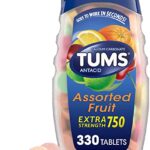Can A Woman Use Baking Soda While Breastfeeding or Pregnant?

What is baking soda?
Baking soda is a leavening agent used in baked goods like cakes, muffins, and cookies. Formally known as sodium bicarbonate, it’s a white crystalline powder that is naturally alkaline or basic. Baking soda becomes activated when it’s combined with both an acidic ingredient and a liquid. Upon activation, carbon dioxide is produced, which allows baked goods to rise and become light and fluffy.
Its superpowers come from a two-letter term: pH. That stands for “power of hydrogen” to make something either an acid or a base (alkaline). Baking soda is an alkaline substance. When it mixes with an acid, it alters the pH level. That’s why it can quickly soothe an upset stomach or cover a bad smell.
Baking soda can help treat heartburn by neutralizing stomach acid. Heartburn is also known as acid reflux. It’s a painful, burning sensation that arises in the upper region of your stomach and can spread up into your throat. It is caused by acid refluxing out of the stomach and up your esophagus, the tube that connects your stomach to your mouth. A few common causes of reflux are overeating, stress, and eating greasy or spicy foods.

Can you drink baking soda while breastfeeding or pregnant?
The use of baking soda during pregnancy or breastfeeding is not recommended. During pregnancy, do not also use antacids that have sodium bicarbonate (such as baking soda), because they can cause fluid buildup. Do not use antacids that have magnesium trisilicate, because they may not be safe for your baby. It is okay to use antacids that have calcium carbonate (such as Tums).
What side effects can this medication cause?
Sodium bicarbonate may cause side effects. Tell your doctor if any of these symptoms are severe or do not go away:
- increased thirst
- stomach cramps
- gas
If you have any of the following symptoms, stop taking sodium bicarbonate and call your doctor immediately:
- severe headache
- nausea
- vomit that resembles coffee grounds
- loss of appetite
- irritability
- weakness
- frequent urge to urinate
- slow breathing
- swelling of feet or lower legs
- bloody, black, or tarry stools
- blood in your urine
What other information should I know?
If your doctor has prescribed sodium bicarbonate, keep all scheduled appointments so that your response to the medicine can be checked.
It is important for you to keep a written list of all of the prescription and nonprescription (over-the-counter) medicines you are taking, as well as any products such as vitamins, minerals, or other dietary supplements. You should bring this list with you each time you visit a doctor or if you are admitted to a hospital. It is also important information to carry with you in case of emergencies. Also read: Can I Use Chloramphenicol When Pregnant?





